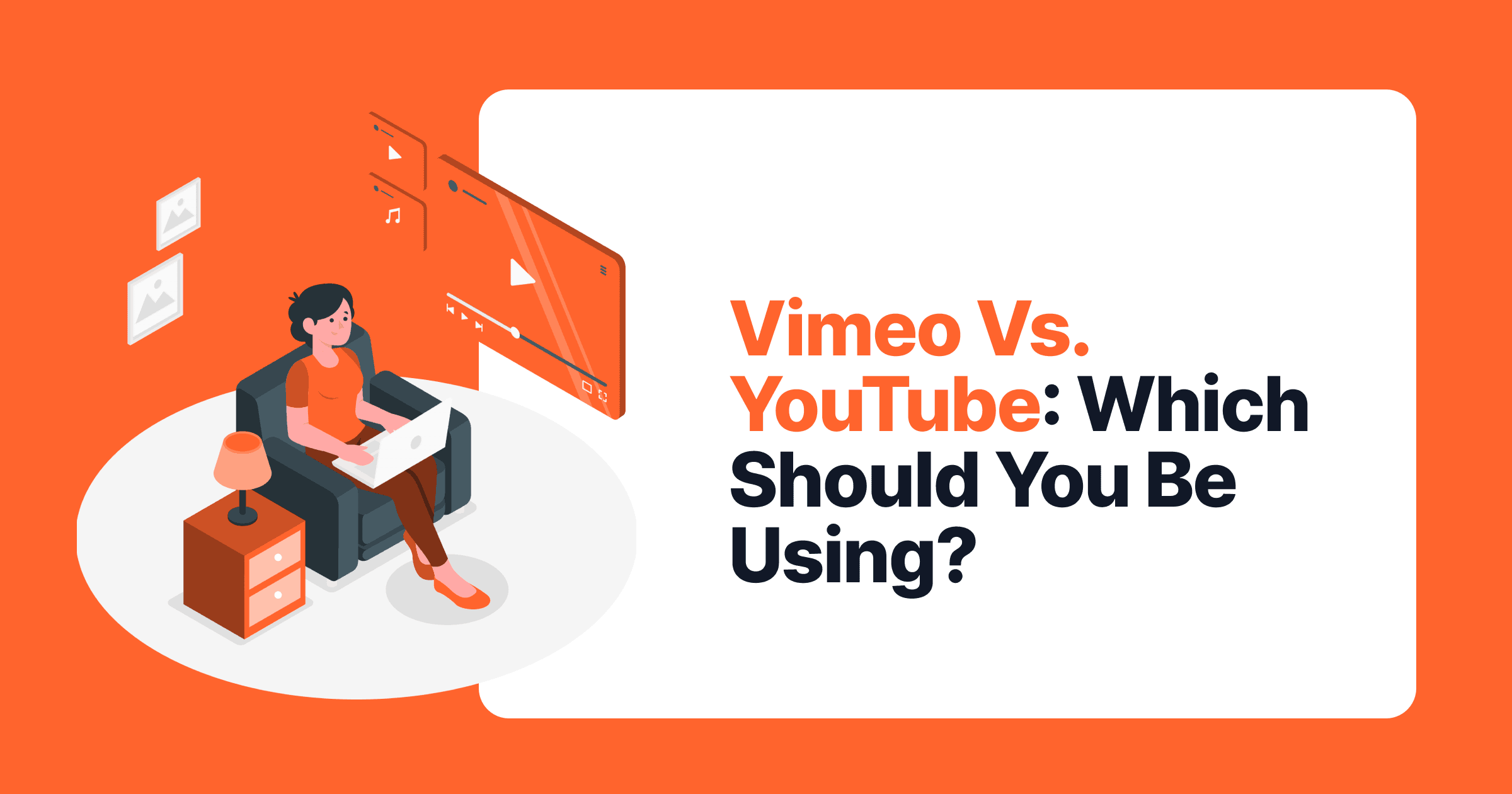You may think that choosing between YouTube and Vimeo as a platform for your business is an easy decision and does not require much investigation and research. While it is evident that both of these platforms have soared in popularity over the last decade, they each give their users a different experience and are not seen as a complete like for like replacement of each other.
While it may be easy to immediately shoot for the platform that you know, take a look at what sets these two platforms apart and what makes each one of them great.
What is YouTube?
YouTube is an online video sharing platform that allows users to view, share and publish content, as well as interact with videos through comments, likes and dislikes.
The platform was started in 2005 and has seen major worldwide success since then, both for casual users looking for entertainment or educational content, and businesses looking to promote their company and offering.
What is Vimeo?
Vimeo is also an online video streaming platform, just like YouTube, and it is directed towards individuals and businesses that are looking to publish high quality content.
Many content creators use Vimeo as an online portfolio of sorts so that their work can be viewed and shared to an audience that they have control in reaching.
Since the platform’s inception in 2004, it has focused quite heavily on allowing users to customize the UI of the platform so that it is visually appealing to their own preferences.
Differences
In order to figure out which of these two platforms is right for your business, let’s take a look at what sets them apart:
Popularity
Okay, so YouTube is the obvious winner here. Since YouTubes launch in 2005, it has ushered roughly one-third of the total internet population to its website. Even though Vimeo launched before YouTube in 2004, it has a far greater barrier to use for its potential users as Vimeo is only accessible after purchasing one of their paid subscription plans.
Because YouTube is free to use, it is much more inviting to both casual and professional users, meaning that if maximizing reach in your video marketing efforts is of top priority, you should be looking at YouTube.

Community
While having access to a large user base is useful and incredibly important, it is just as crucial for content publishers to be able to interact with their viewers. Because of YouTube’s larger total audience, it is less likely that any video published by a marketer who does not yet have a large subscriber base on the platform will see the engagement that they are hoping for. In fact, every day up to 5 billion videos are watched on YouTube making it pretty easy for your content to get smothered and overlooked.
Vimeo’s smaller viewer base allows publishers to create communities around their content much easier as there is a great chance that every video uploaded will be viewed by the desired target audience. Vimeo takes the win here.

Ads
Speaking of ads, there are 2 main points of discussion in this area. If you are wanting to run ad campaigns on either of these video content platforms, you will be disappointed that Vimeo has limited options for running ads on its platform. As they only offer ad space below a video and not “in” it as YouTube does, it is evident that YouTube is the way to go for running paid ads.
However, a big drawback of the ads on YouTube, specifically the pre-roll ads that play for a couple of seconds before a selected video starts, is that they interfere with the user’s viewing experience and can often frustrate the viewer instead of peaking their interest with appealing marketing content. This has resulted in many users installing an ad block in their browser so that these ads can be skipped, meaning that the total reach of the ads on YouTube is significantly lower than its potential.
With these two points in mind, there is no clear winner between Vimeo and YouTube, and it comes down to what your specific marketing needs are from either of these platforms.

Cost
YouTube is free to both consume and publish content. While this is not the case with Vimeo has chosen to go since you need to have purchased one of their monthly packages once your 30 day free trial runs expires.
Clear winner here, you can’t argue with free. YouTube wins.
Customization
Vimeo has spent a lot of time creating a platform with a customizable media player so that the platform’s users can tailor the look of the UI and white label the player so that it follows the correct branding of the user’s company.
YouTube is currently unable to match this level of customization so Vimeo takes the cake here.

Mobile
This is where things get a little tight… Both Vimeo and YouTube offer mobile streaming of their content, and both are well optimized for mobile devices. What sets the two apart though is the sheer volume of users that make use of the YouTube mobile application. Currently, YouTube sees about 50% of its user base consuming content via mobile devices. With numbers like that, they are starting to become a rival industry to giant streaming sites such as Netflix for viewership.
Because YouTube has seen so much success with mobile users, we’ll have to give them the win here.

SEO
Since Google acquired YouTube in 2006, the platform has skyrocketed with search optimization potential and has delivered on this with fantastic results for marketers. While this is kind of cheating since any video on YouTube has a greater chance of being displayed in Google searches, it is YouTube’s superior keywording and hashtags that allow the platform to see so much success when it comes to SEO.
Just to prove this point a little further, YouTube is the second largest search engine on the internet, with only Google itself beating it for SEO influence.
Analytics
Ah yes, a big one for marketers. Once again the free option is going to be the winner here, meaning that YouTube takes the win. While both platforms offer powerful and useful analytics to content publishers, only basic analytics are available to Vimeo users on the free trial, meaning that they will need to purchase one of the paid packages in order to have access to more advanced data, similar to what YouTube offers for free.

Where to Next?
While both Vimeo and YouTube are similar to one another, and in many ways perform the same functions, it is where the platform is focused that differs.
YouTube is focused on volumes that allow any Tom, Dick and Harry to upload content ranging from a low-quality vlog to high-quality promotional content for businesses. Vimeo has a slightly different approach as the paywall they have implemented allows for them to have an influence on who uses their platform, which has resulted in more high-quality content to find its way to the platform as a standard.
So which platform will you be choosing for your online video digital marketing needs? Or on second thought, how about you use both!
Take a look at the Oviond blog to see what else you can learn about digital marketing.
